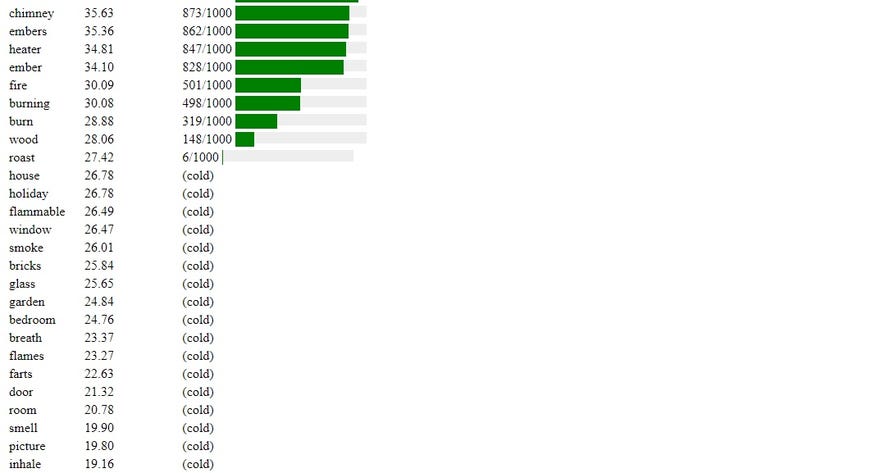Semantle is hard mode Wordle, powered by a Google neural network
You'll need dozens of guesses
In many ways, Semantle is hard mode Wordle. Gone is the simplified dictionary and five-letter limit, meaning words can be any type and length, and gone is any indication of correctly guessed letters or positions.
Instead, you've got two new helpers: the ability to make infinite guesses, and a neural network able to learn word associations telling you how close, conceptually, you are to the correct answer. I've yet to find the solution in fewer than 50 guesses.
Semantle, built by David Turner, uses Word2vec, an algorithm created by researchers at Google which can crawl through a large amount of text and, on its own, work out how words relate to one another. It then represents those associations by creating, basically, a galaxy of words. Words that are close together are similar, words that are far apart are less so.
How this is represented in Semantle is as a number between 1 and 100 which tells you how similar your word is to the solution. In yesterday's game - like its inspiration, Semantle offers just one puzzle per day - the word "digest" had a similarity rating of 2.85 and "explode" had a rating of 16.17. The correct answer has a similarity rating of 100.
What makes this challenging is that the similarity number is boiling down potentially hundreds of different axes by which a word might be considered "similar". Perhaps you've used a synonym of the solution and are on the right track. Or, perhaps you've used an adjective and the solution is also an adjective, or a word that would appear in the same part of a sentence. If the solution has multiple substantially different definitions, the list of just-somewhat-similar words could be vast.
Where each guess in Wordle narrows options for your next attempted word, Semantle's similarity rating only lures you into that feeling to later confound you. I have discovered that "happy" can have a similarity rating of 50.07 while "happiest" can be a mere 16.75. The numbers don't necessarily smoothly ascend towards the answer, either - the closest possible word could have a similarity rating of just 59.99, as it is in today's puzzle.
Instead of drilling down further and further towards an answer as in Wordle, Semantle rewards you for digging holes in multiple places. Abandoning a notion that seems to be working is hard for human beings - or at least for me. If I'm getting good results from "explode" and "flame", it's difficult to stop, type in "dog", and see what happens. Yet the best way to find the solution seems to be to detect it in the overlap. "Explode" and "flame" did well for me yesterday, but I only discovered the answer when I found house-related words - "cottage", "door", "window" - did well, too. The correct answer was "candle".
A second piece of information, added to the game this week, does offer additional help. In a column titled "Getting close?", it lets you know whether your word is within the 1000 most similar possible guesses. My "explode" at 16.17 didn't cut it yesterday, but "roast" (27.42) was just inside at 6/1000. "Fireplace" (42.30) was 962/1000. It's a more direct and trustworthy indication that you're getting, well, close.
While the list of 80 words it took me to find yesterday's solution isn't as easily shared as Wordle's tight grid of squares, comparing notes with friends remains compelling. My group discovered today's solution from four entirely distinct angles.
The fuzziness of the information it offers mean that Semantle has the power to infuriate, and it tempts you constantly with a "Give up" button which reveals the answer. I return to it each day anyway, ready again to pathfind through its galaxy map. You can join me by playing it for free in your browser.
Use our Wordle Solver tool to help you figure out the answer to any Wordle in moments! Just pop your current guesses in the grid and watch the tool instantly give you all the potential answers.

